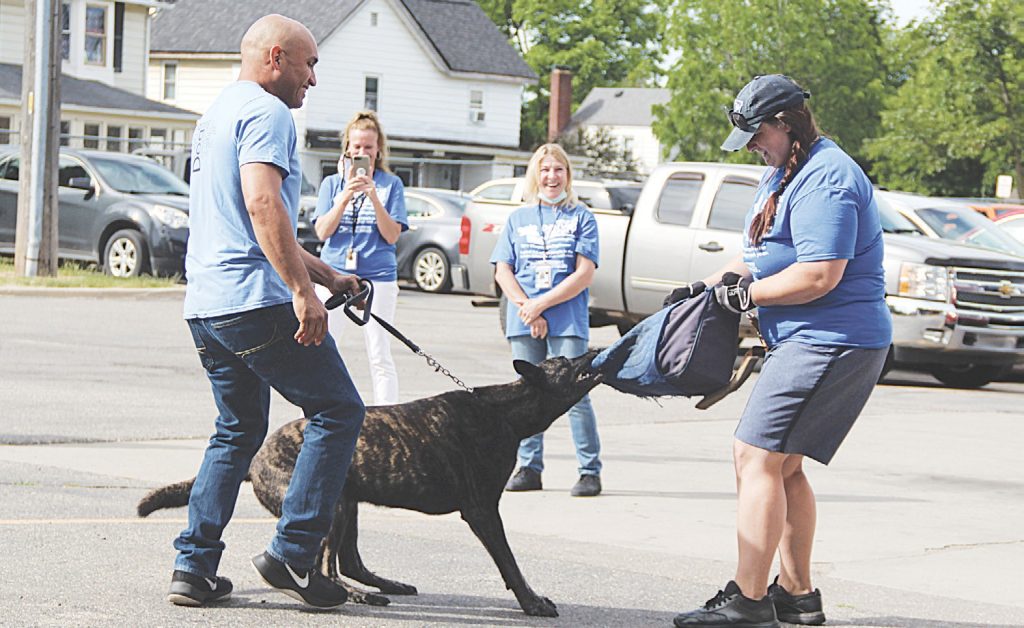
Introduction
Employee dog bite prevention is a concerning issue, impacting many professions where workers encounter dogs on a regular basis. From postal carriers to delivery drivers and utility workers, these incidents can lead to severe injuries, lost workdays, and legal complications. In this article, we’ll discuss the risk of occupation-related dog bites and provide practical tips to prevent such incidents.
Understanding the Risk of Occupation-Related Dog Bites
Employee dog bite prevention occurs when individuals who are not dog owners or handlers encounter aggressive or territorial dogs while performing their job duties. These incidents can happen in various work settings, including residential neighborhoods, commercial areas, and remote locations. Understanding the risk is crucial to implementing preventive measures effectively.
The Impact of Dog Bite Prevention
Dog bites can have severe consequences, both physically and emotionally. Injuries often require medical attention and can result in scarring, infection, or more severe health issues. Moreover, the trauma associated with such an incident can affect a person’s mental well-being and job performance.
Common Occupations Prone to Dog Bites
Several professions face a higher risk of Employee dog bite prevention. These include postal workers, delivery drivers, utility technicians, animal control officers, and even healthcare professionals making home visits. Identifying these high-risk occupations is the first step in prevention.
How to Prevent Employee Dog Bite Prevention
5.1 Understanding Canine Behavior
To prevent dog bites, it’s essential to understand canine behavior. Dogs may become aggressive due to fear, territorial instincts, or previous negative experiences. Education on dog body language and signs of distress is vital.
5.2 Effective Communication Techniques
Communication is key when encountering dogs. Workers should communicate with dog owners when possible, making them aware of their presence. Calm and non-threatening vocal tones can help prevent aggressive reactions.
5.3 Personal Protective Equipment (PPE)
Wearing personal protective equipment, such as bite-resistant gloves and clothing, can provide a physical barrier in case of an attack. PPE can significantly reduce the severity of injuries.
5.4 Workplace Policies and Training
Employers should establish clear workplace policies for dealing with dogs and provide proper training for employees. This includes teaching employees how to de-escalate situations and respond to dog-related incidents.
Reporting and Responding to Dog Bites
In the unfortunate event of a dog bite, it’s crucial to know how to respond. Workers should report the incident to their employer and seek immediate medical attention. Reporting helps create a record for potential legal actions and compensation claims.
Legal Implications and Compensation
Occupation-related dog bites can lead to legal consequences. Dog owners may be held liable for their pet’s actions, and victims are often entitled to compensation for medical expenses and lost wages. Legal advice is essential in such cases.
Case Studies: Successful Prevention
Examining successful prevention stories in various professions can provide valuable insights into effective strategies. These cases showcase the positive impact of preventive measures in reducing Lone worker dog bite prevention.
Dog Bite Statistics
Understanding the prevalence and trends of dog bites in different industries can help raise awareness and drive change. We’ll delve into key statistics related to occupation-related dog bites.
Conclusion
Occupation-related dog bites are a significant concern, but with proper education, communication, training, and protective measures, these incidents can be greatly reduced. By taking proactive steps, workers can perform their job duties safely and without the fear of dog-related injuries.
FAQs
1. What should I do if a dog approaches me aggressively during work?
If a dog approaches you aggressively, avoid making direct eye contact, stand still, and avoid sudden movements. Slowly back away from the dog, and try to create distance between you and the animal.
2. Are employers responsible for preventing occupation-related dog bites?
Employers have a responsibility to create a safe work environment. They should provide training, enforce policies, and supply necessary protective equipment to reduce the risk of dog bites in the workplace.
3. Can I sue a dog owner if their pet bites me during work?
Yes, you can sue a dog owner if their pet bites you during work. Dog owners are often liable for their pet’s actions, and you may be entitled to compensation for your injuries.
4. How can I educate myself about canine behavior to prevent dog bites?
There are many resources available online and through animal behavior organizations that offer courses and information on understanding canine behavior. It’s important to be informed to prevent dog-related incidents.
5. Is it mandatory for workers in high-risk professions to wear protective equipment when dealing with dogs?
In many high-risk professions, wearing protective equipment when dealing with dogs is mandatory. It’s an essential measure to minimize the severity of injuries in case of a dog bite.